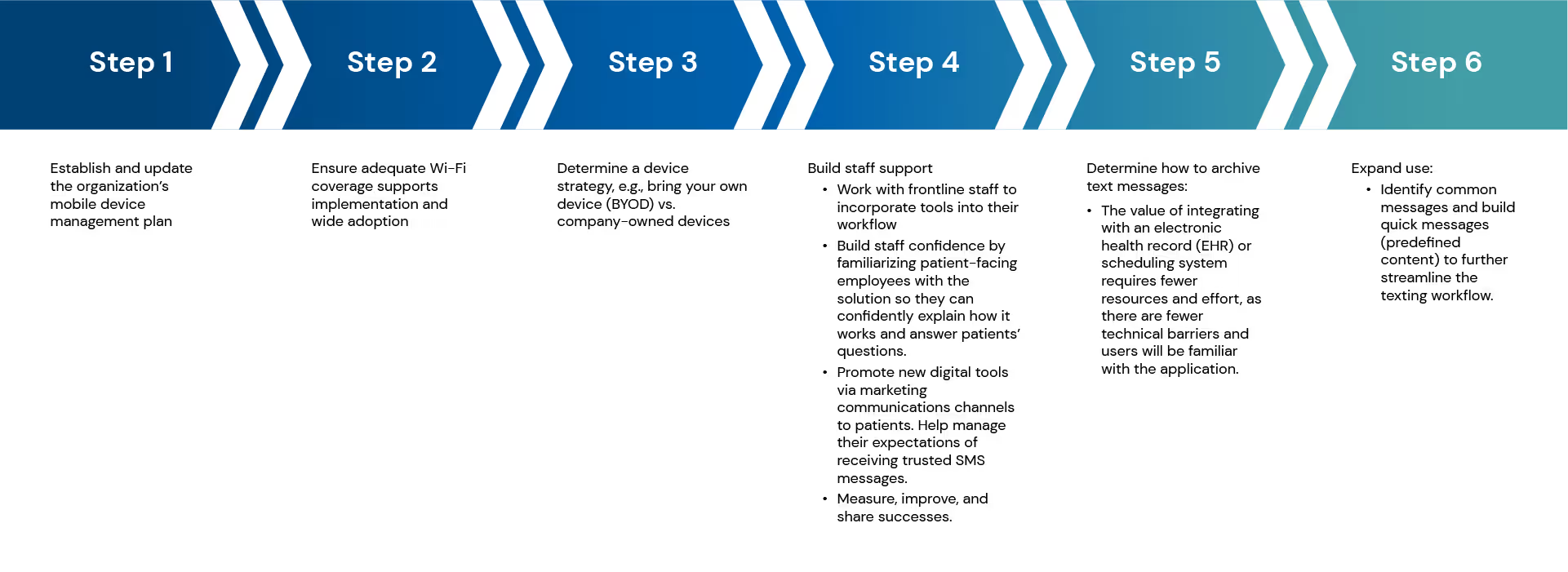
SMS, or short message service commonly known as texting, is a fast, efficient, and convenient method of communication. Messages can be sent from virtually any location to mobile devices. Instant messaging solutions support the sending audio and video files, images, and other file attachments via text. Studies reveal text messaging has overwhelming support:
In social settings, SMS is so pervasive that it sometimes replaces even face-to-face communications. It is commonplace to see people sitting directly across from each other, together but heads bowed and silent, their eyes and fingers scrolling down the screen of their smartphones, typing.
In healthcare, HIPAA-compliant secure messaging is accepted as a standard in provider-to-provider communication, replacing outdated, insecure methods like phone calls, pagers, faxes and snail mail. This is welcome news as healthcare organizations need proven tools extended to patients to cope with an overburdened workforce due to an unprecedented labor shortage, archaic technology fails, and dropping patient perceptions of the care experience.
Secure messaging is also expected to improve healthcare delivery to an aging population, working to manage multiple chronic conditions. Older adults are disproportionately affected by chronic conditions, such as diabetes, arthritis, and heart disease. Nearly 95% have at least one chronic condition, and nearly 80% have two or more.

Healthcare and the tools used to interact with patients, e.g., secure messaging, are fast evolving beyond traditionally treating patients with single acute conditions to treating a growing number of patients with multiple chronic conditions.
The demand for patient text messaging to initiate, intervene and maintain healthcare behaviors and improve outcomes, coupled with the pandemic’s accelerated use of digitalization, makes one trend certain: Healthcare is on the fast track to becoming patient-centered, integrated, and personalized.
Selecting the best secure messaging platform depends on the needs of your practice or health system. Two types of messaging tools to build interactive provider-patient messaging experiences are:
Live person to live person: One of the oldest forms of telehealth, a HIPAA-compliant secure two-way messaging platform is the initial first step to allow providers and care team members to communicate easily and effectively with one another ─ live person to live person ─ in real time reducing the volume of phone calls. SMS messaging can also be extended to patient users to communicate with their providers between visits.
AI-digital assistant to person: As the organization’s healthcare communication evolves, a digital assistant or chatbot using advanced artificial intelligence (AI) can enable a more personalized, conversational experience. A robotic process automation (RPA) chatbot mimics the decision-making ability of a human healthcare professional when performing rule-based tasks, offloading routine, administrative tasks entirely.

The following are three basic categories of secure messaging applications implemented by healthcare organizations:
Secure messaging can dramatically reduce the amount of time that healthcare staff spend on nonstop telephone calls with providers, peers, patients or families of patients to increase efficiency and save time. Examples of how organizations can swap secure messaging for time-consuming, repetitive calls and telephone tag, and care coordination activities include:
Patients prefer to interact online at their convenience with their providers, whether working, traveling, or at home. Conversational AI chatbots are best used in this instance to automate the patient's distinct needs before, during, and after the visit, saving clinicians and staff precious time. Self-service options that empower patients include:
Secure messaging that links to AI conversational chatbots supports the next frontier of proactive, personalized engagement. This is particularly beneficial to enable proactive outreach for preventive healthcare without the need to hire additional staff.
Since the Triple Aim is rooted in improving population health, preventive care messaging can fundamentally transform the approach to patient care prevention strategies increasing cholesterol testing, colonoscopies, pneumonia vaccinations, mammography exams, PAP smears, and prostate examinations, to name a few.
Two programs where high-touch electronic messaging can make a difference are:
A secure, user-friendly messaging solution allows your hospital, health system, medical practice or healthcare organization to maximize efficiency and quality care, while concurrently realizing tangible benefits:
Here are five basic steps to jumpstart planning and pre-deployment activities when rolling out a secure messaging solution.

Embracing secure texting with patients is a win-win; it improves patient satisfaction and loyalty and staff satisfaction.
